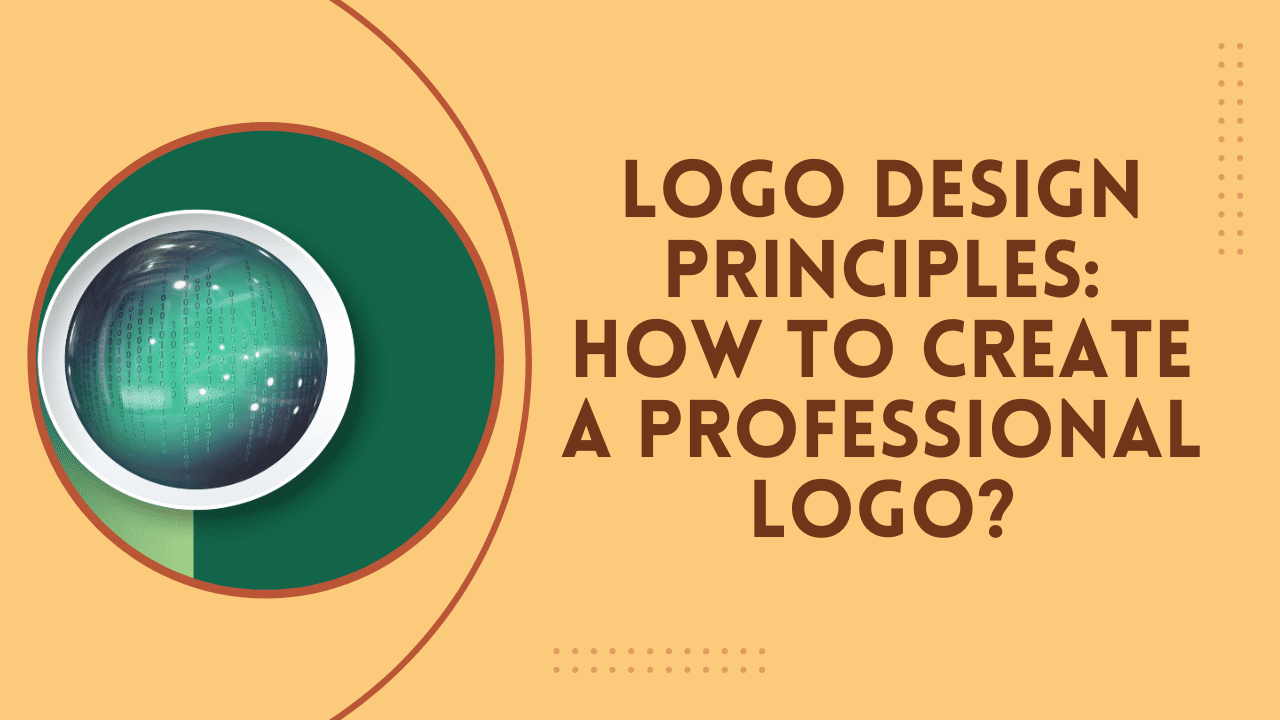Creating a logo is one of the steps that make up a very important part of a brand’s identity. A logo is more than a visual symbol; it captures the essence, values, and personality of a business. A logo is a vital part of your business branding, whether you’re launching a startup or already have a well-established company; a well-crafted logo can do the heavy lifting for you by differentiating your brand from the competition and creating a long-lasting impression. So what exactly defines a professional logo? So in this brief discussion, we will talk about the fundamentals of logo design and how to make a logo that stands out.
(1) Simplicity:
Identified among the most basic rules of logo design is simplicity. A good logo, especially for a brand new company, should be clean, clear, and simple, as we already established. And it is needed to convey your brand message clearly and concisely. Consider some of the most famous logos — those of Apple, Nike, and McDonald’s. These logos are all simple designs, but they are also instantly recognizable.
Why simplicity matters:
- Easy to recall: Simple logos are easier to remember for people, which is key in brand recognition.
- Versatility: The uncomplicated logo can be scaled up or down in size for different media/platforms.
- Timeless: Over time, complex logos can appear dated. Minimalist logos, in contrast, don’t become dated after a few years.
(2) Relevance:
You cannot create a professional logo that does not correlate to your business and its audience. Colors, fonts, and symbols should communicate the industry you’re in, the values you want to portray, and the emotions you’re trying to elicit.
For example:
- For example, if their logo is made by a tech company, they would likely want a sleek, modern design with sharp lines and futuristic fonts to promote a sense of innovation and advancement.
- For example, a law firm may choose a more conservative and classic design to project trustworthiness and professionalism.
How to ensure relevance:
- Study your target market and what they like.
- Welcome content to support your brand mission and values.
- Steer clear of fads that may not suit your business long-term.
(3) Versatility:
A logo has to work under a high variety of applications. Your logo should have a great appearance at any dimension and any format, from the business cards to the billboards and even your websites. It should also be readable in black and white and in full color, too.
Words of advice for maintaining versatility:
- Scalable: Your logo needs to look good in small form (on a pen) or in large form (on a billboard).
- Color logo variations: Include a few examples of how the logo should look in color, black and white, and grayscale.
- Clean geometry: Complex details might get distorted when you scale the logo.
(4) Memorability:
Logos have to be memorable. Peel back the layers, and people should be able to immediately remember your brand. This will help in recognition in future experiences, and you want your logo to pop when they think of food brands in the future.
How to achieve memorability:
- Whether you incorporate an abstract symbol, creative typography, or a mix of the two, be original and unique with your design elements.
- Include things that inspire feelings and allow folks to engage with your brand.
(5) Timelessness:
An effective logo is also an eternal one. Although this may tempt you to design a logo that looks up-to-date with the trends at their peak, if trends come back and go out of style, chances are that your logo will be out of style in less than a couple of years. Design for many years of relevancy and effectiveness.
What it means to design for timelessness:
- Steer clear of passing trends that might become irrelevant or cliched overnight.
- Emphasize timeless design principles that will stay stylish no matter what the decade, like balanced proportions, clear shapes, and harmonious palette choices.
(6) Appropriate Use of Color:
Use of colors Colors play an important part in making a logo, since it has a great impact on the feelings and perception of people. Different colors convey various meanings and evoke particular emotions therefore, choosing the correct colors that resonate with your brand values will be crucial.
For instance:
- Red can signal excitement, passion, or urgency.
- Blue is often associated with trust, professionalism, and calm.
- The color green represents growth, health, and sustainability.
Color tips:
- Keep your color palette to 2 to 3 core colors to keep it simple and not overload the reader.
- Make sure your logo works in color and in black and white, since it could potentially be used in different situations where it may not be possible to use color.
(7) Balance and Proportion:
A good existing logo will distribute visual weight in a balanced manner. Symmetrical or asymmetrical, the proportions and alignment of the elements in your logo are essential in creating a harmonious, professional look.
How to achieve balance:
- Make sure that size relationships make sense, such as between the icon and the text.
- Make sure that there is plenty of whitespace for the logo to breathe so it does not feel cramped or crowded.
(8) Uniqueness:
Your logo needs to make your brand stand out among competitors. A logo that is too similar to another company will cause confusion and damage to the brand identity. Be original, and do not use generic symbols or too popular designs.
How to ensure uniqueness:
- View competitive research to see how either your competitors are using logos.
- Implement unique design characteristics or ideas that showcase your brand’s uniqueness.
Conclusion:
Creating a professional logo is a very detailed process, and you need to know the identity of your brand. When you keep in mind simplicity, relevance, versatility, memorability, timelessness, accurate use of color, balance, and uniqueness, you can develop a solution to a logo that not only stands out but also represents your brand’s heart!
Keep in mind that a logo is not just a nice image; it’s a graphic representation of your business story, beliefs, and dreams. But when done right, it becomes a key part of your brand’s success — leading to trust, recognition, and loyalty among your target audience. So invest in a logo that actually reflects your business—and see your brand identity bloom.

